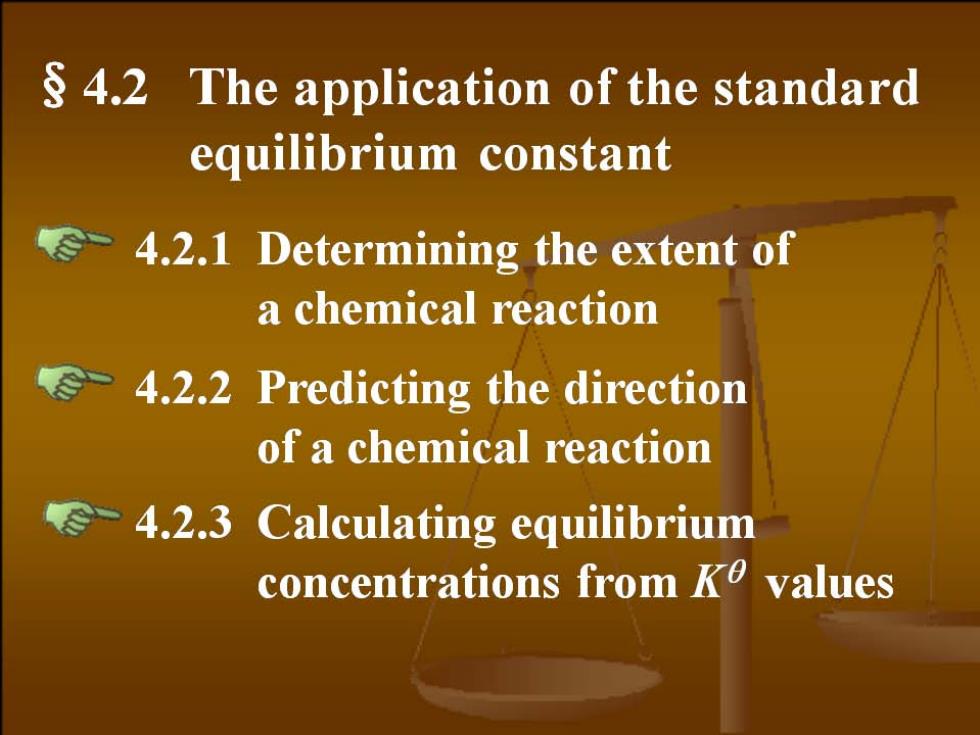
4.2 The application of the standard equilibrium constant 4.2.1 Determining the extent of a chemical reaction 4.2.2 Predicting the direction of a chemical reaction 4.2.3 Calculating equilibrium concentrations from K values
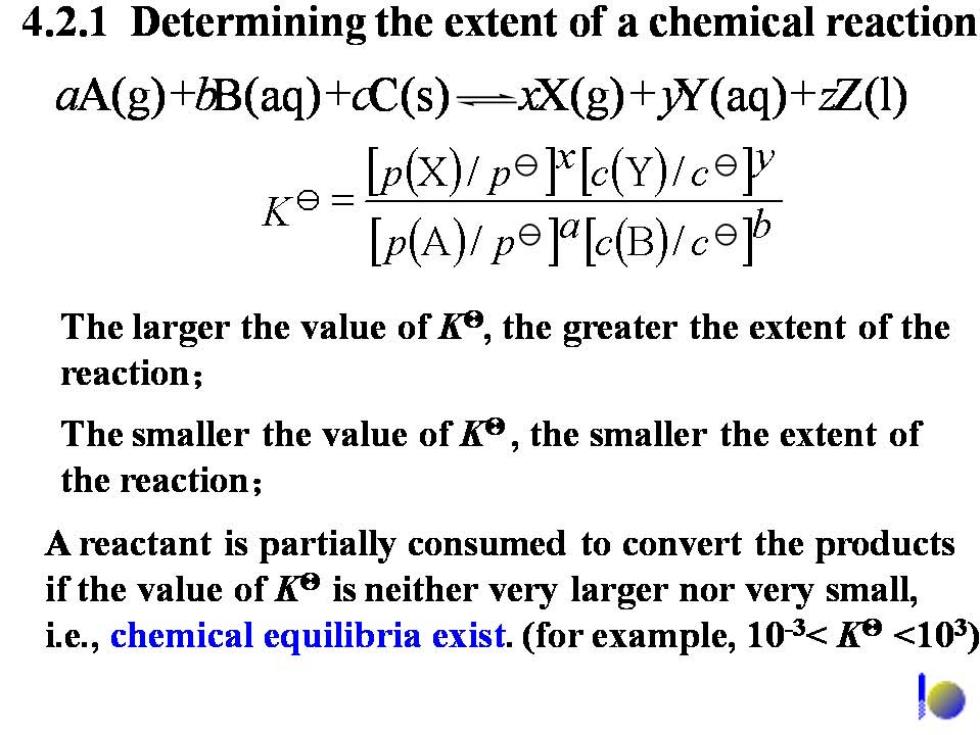
4.2.1 Determining the extent of a chemical reaction aA(g)+B(aq)+cC(s)--xX(g)+(aq)+Z(1) (Y)op [pA)/pe][eB)/co的 The larger the value of Ke,the greater the extent of the reaction; The smaller the value of ke,the smaller the extent of the reaction; A reactant is partially consumed to convert the products if the value of Ke is neither very larger nor very small, i.e.,chemical equilibria exist.(for example,103<Ke <103) o
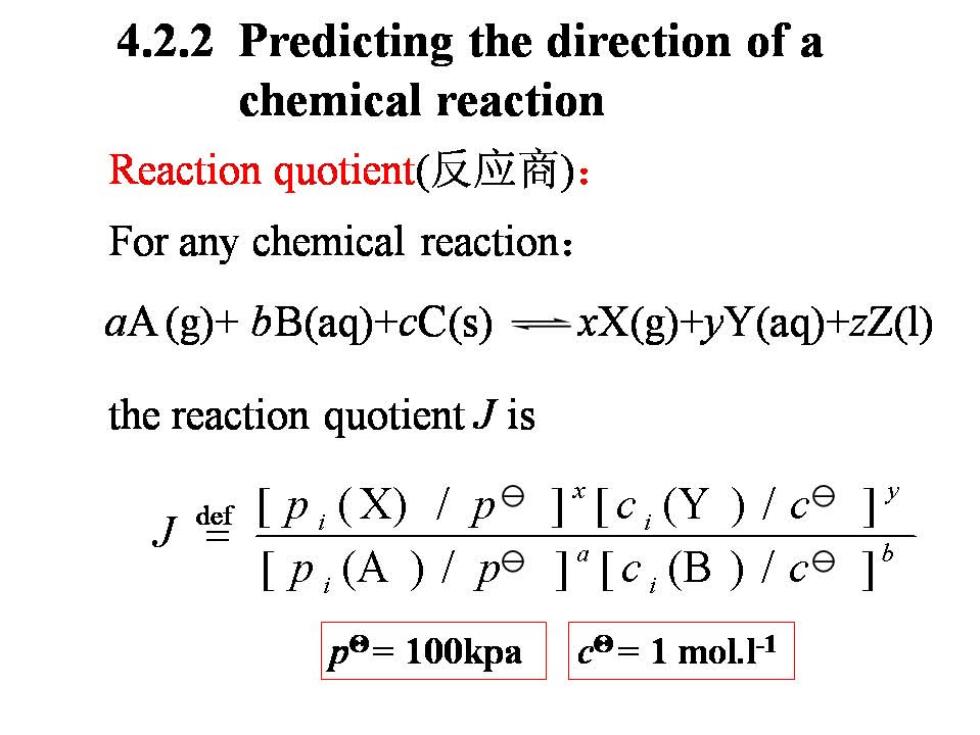
4.2.2 Predicting the direction of a chemical reaction Reaction quotient(反应商): For any chemical reaction: aA(g)+bB(aq)+cC(s)=xX(g)+yY(aq)+zZ(1) the reaction quotient.J is J dIp(x)/p ]*[c,(Y)/c]> [p,(A)/pe]“[c,(B)/ce] pe=100kpa ce=1 mol.l-1
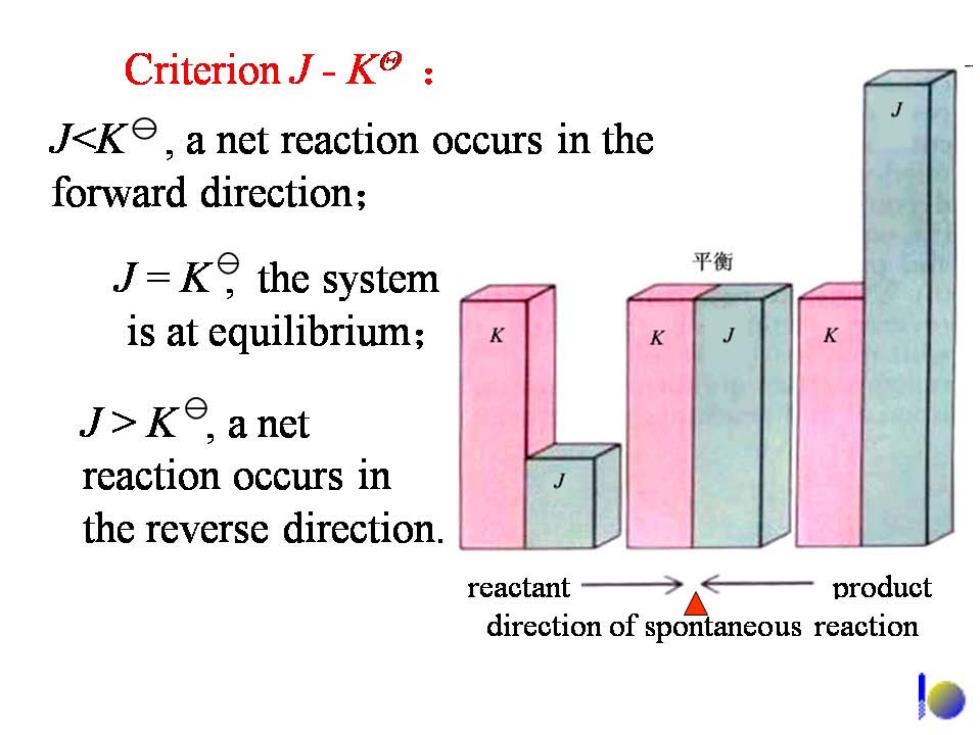
CriterionJ-K J<ke,a net reaction occurs in the forward direction; J=K the system 平衡 is at equilibrium; J>Ke,anet reaction occurs in the reverse direction. reactant→ product direction of spontaneous reaction
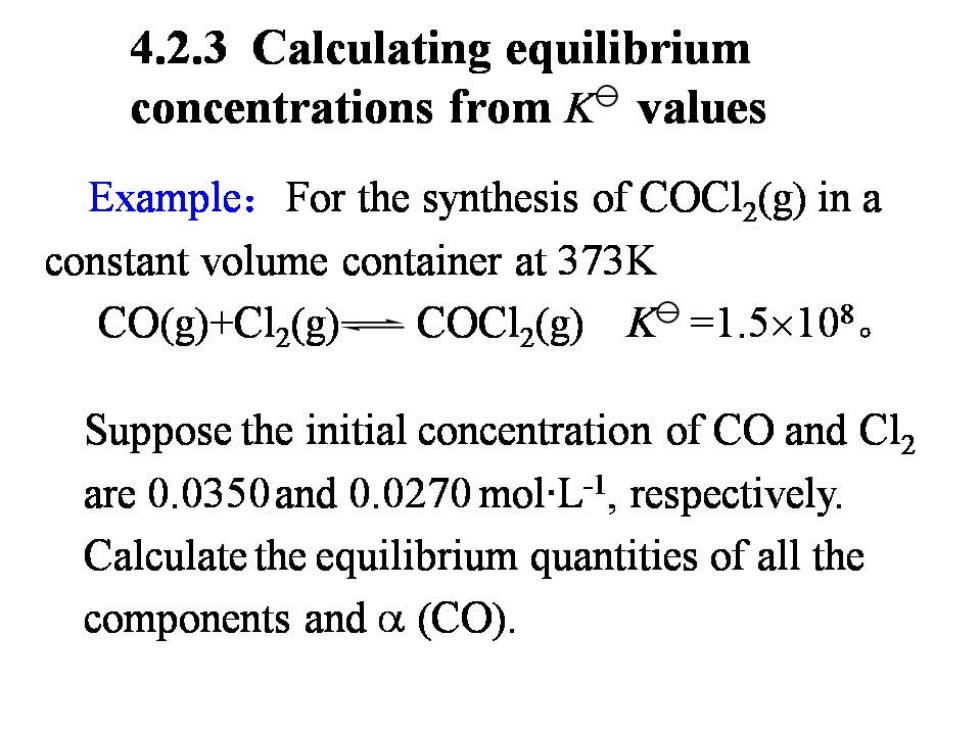
4.2.3 Calculating equilibrium concentrations from ke values Example:For the synthesis of COCl2(g)in a constant volume container at 373K C0g)+C12(g)=C0C2(g)K9=1.5×108。 Suppose the initial concentration of CO and Cl2 are 0.0350and 0.0270 mol-L-,respectively. Calculate the equilibrium quantities of all the components and o (CO)